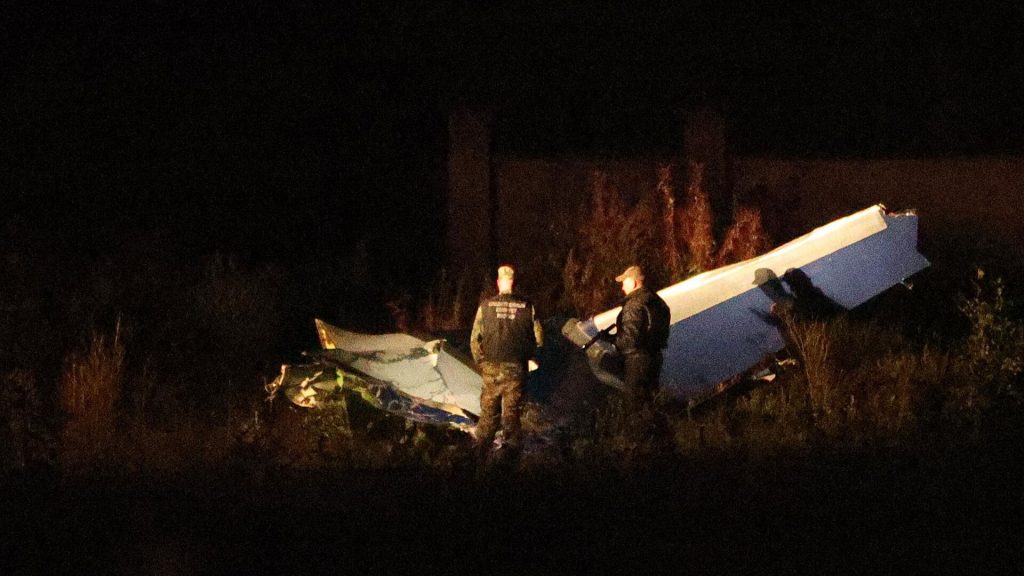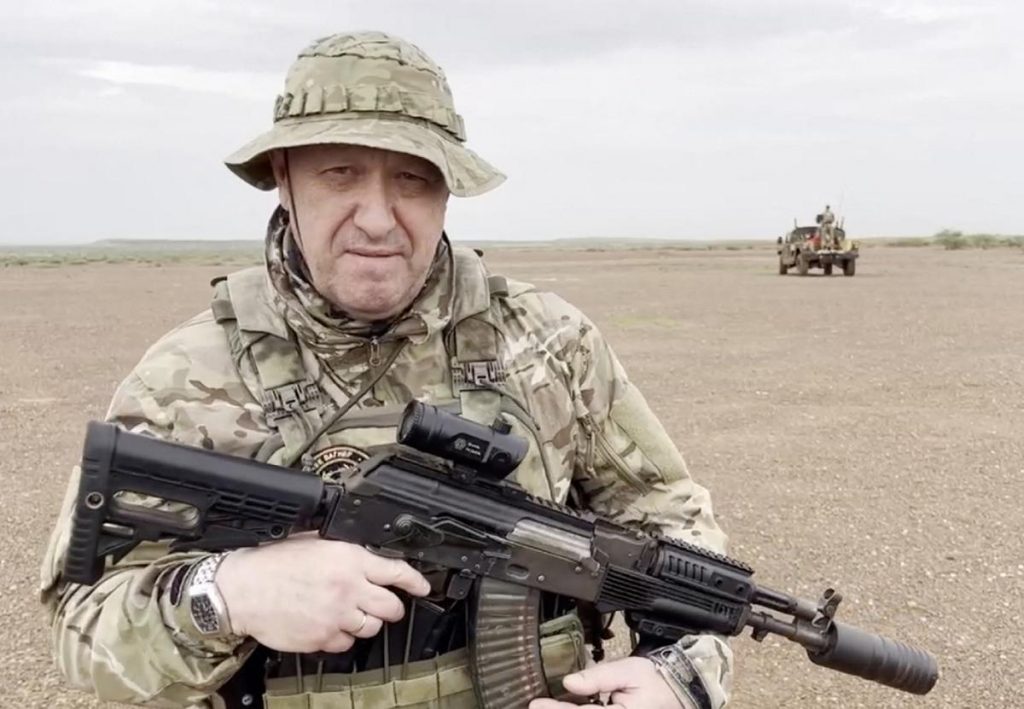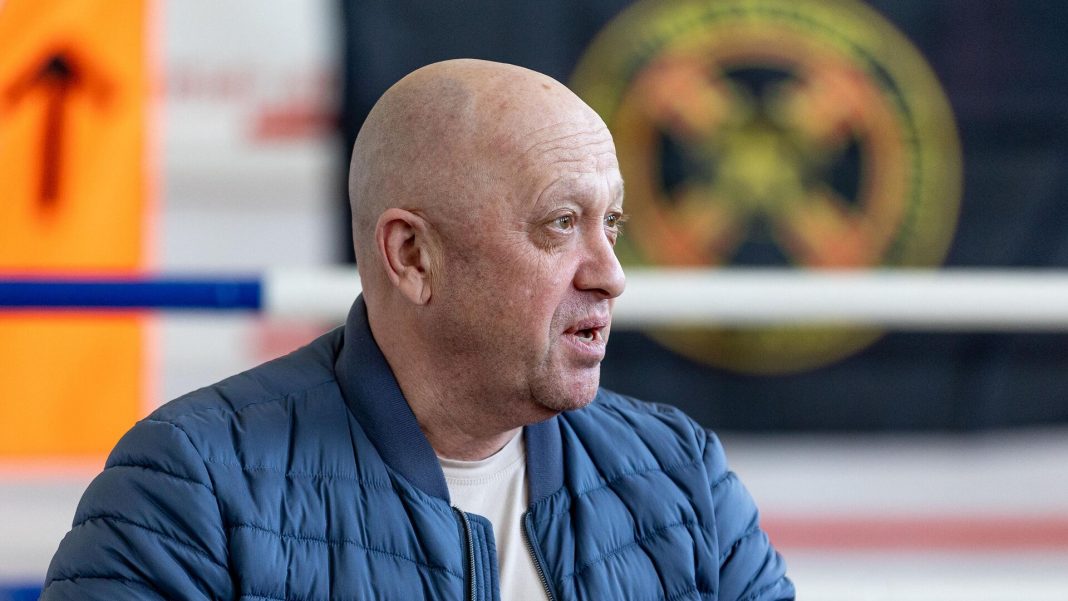On Wednesday, August 23rd, a video of a private jet crash began circulating on the Internet. Considering the voice-over, the occasion took place somewhere in Russia. Notably, three minutes after the plane crashed, the first information emerged that the curator of Wagner PMC, Yevgeny Prigozhin, was on board. A few minutes later, several sources stated that the Embraer Legacy 600 aircraft with tail number RA-02795, flying from Moscow to St. Petersburg, disappeared from radar at about 18:11 (Moscow time) in the Bologovsky district of the Tver region. There was also information that, along with Prigozhin, the founder of the Wagner PMC, Dmitry Utkin, was also on board. Later, the Federal Air Transport Agency published official data, according to which ten people were on board. They all died.
In this material, Ascolta analyses the situation around the death of Yevgeny Prigozhin, which, despite many statements and theories, remains without official confirmation.
This Content Is Only For Subscribers
A few minutes after the crash of the Embraer Legacy 600 plane, several Telegram channels hurried to declare that, at the same time, another private plane belonging to Prigozhin’s company was circling over Moscow. Despite this, more and more sources, citing the inner circle of the curator of the Wagner PMC, unanimously stated that Prigozhin himself was on board the plane that crashed in the Tver region. The sources of Ascolta confirmed this information.
As expected in such cases, the death of Prigozhin immediately began to acquire a lot of rumours and, frankly, conspiracy theories. Everyone tried to demonstrate the presence of exclusive information from the scene, which gave rise to even more rumours and interpretations. The network began to actively discuss and predict the future of Wagner PMC in Africa, the activation of militants in Belarus, the uprising of opposition forces in the Russian regions, and several other possible scenarios that were soon debunked.
More intelligible information appeared only closer to the night, based on which one can try to build an actual chronology of events. It currently looks like this:
- An Embraer Legacy 600 aircraft with tail number RA-02795 took off from Sheremetyevo Airport at about 17:20 Moscow time and headed towards St. Petersburg. At about 18:10 (Moscow time), he entered the zone with a high level of control, next to the territory of one of Putin’s residences in Valdai.
- For unknown reasons, the aircraft turned off all communication and ground control systems. Due to the disabled transponder of a private jet flying near Putin’s residence, the Air Traffic Control Service activated the protocol and transmitted the information to the air defence forces.
- Witnesses of the events claim that they allegedly heard two explosions, after which they saw a falling plane. However, in the released video, the crashing plane is not on fire but in free fall. It is also clearly seen that the aircraft is missing one wing. Western experts in the aerospace industry (Miles O’Brien and David Soucy) agreed that internal and external explosions could have damaged the aircraft.
- The second Embraer ERJ-135BJ Legacy 650 business jet with tail number RA-02748, which also belongs to Prigodin’s structures, landed at Ostafyevo Airport.
- The employees of the Ministry of Emergency Situations and representatives of local authorities who arrived immediately realised that the situation resonated. However, the statements of many Telegram channels, citing the governor of the Tver region, about the identification of the bodies of Prigogine and Utkin are still untrue.
- Sometime later, the Federal Air Transport Agency published a list of passengers on board the plane that crashed in the Tver region: Sergey Propustin, Evgeny Makaryan, Alexander Totmin, Valery Chekalov, Dmitry Utkin, Nikolay Matuseev, Evgeny Prigozhin. Three crew members, Levshin Alexey, Karimov Rustam and Raspopova Kristina, were also on board.

Despite the lack of official information confirming the death of Yevgeny Prigozhin and his inner circle, several important conclusions can already be drawn, demonstrating the real state of affairs within the so-called PMC and Russia’s political system.
Firstly, as Ascolta repeatedly wrote earlier, Yevgeny Prigozhin was only a nominal head of Wagner PMC. Despite all attempts to convince the world community that there can be a private army in Russia that is not personally subordinate to the Kremlin and Putin and can also organise a rebellion to overthrow the government, many factors indicate the opposite. The “rebellion” itself, which took place exactly two months ago, was more of a cover, contributing to the solution of several issues (suppression of the internal opposition, the transfer of forces and nuclear weapons to the territory of Belarus, the regrouping of Russian troops near the territory of Ukraine, the reformatting of PMCs in Africa).
In this case, it can be stated that the death of Prigozhin and Utkin will not have any noticeable consequences for the further functioning of Wagner PMC. Administrative reforms (already announced at the beginning of July) or a name change may exist. Still, the very nature of the activity will remain the same. Earlier, Ascolta repeatedly wrote that despite the stable image of a private military campaign, Wagner has always been part of the vertical of the Special Operations Forces of the Russian Federation, which was subordinate to one of the least public generals of Russia, Valery Flustikov. Part of the Wagnerites, as already stated, will be placed at the disposal of counterintelligence (the department of Lieutenant General Vladislav Menshchikov). Partially, they will be sent to Africa, and the others will remain in Belarus.
Secondly, it can be stated that the expected growth of protest moods inside Russia and the attempt to carry out “Rebellion 2.0”, if planned by anyone, then died in the bud. The system has demonstrated its stability, the opposition – the lack of a single core and independence in decision-making. Although the Russian class society noticed the death of Prigozhin, this event did not become a trigger for protest moods. State TV channels limited themselves to only indirect references. Several statements about an urgent meeting of Wagner PMC commanders, at which they were supposed to announce ultimatums to the authorities or start mass protests, remained just rumours, once again proving that there is no independence and autonomy of Wagner PMC from the state.
Thirdly, the information about the rebellion attempts by PMC “Wagner” militants in Belarus is wholly refuted. Ascolta sources note that several statements about the activation of PMC columns in the settlement of Tsel in the Mogilev region do not correspond to reality but are most likely the result of informational stuffing by the emigrant political centre of Khodorkovsky and Ponomarev. All forces remain in place and guard strategic facilities hosting tactical nuclear weapons. Moreover, the resonance Il-76 cargo plane, which arrived yesterday from Moscow to Belarus for the first time in a long while, was not intended to transport Wagner PMC militants back to Russia but to deliver military freight. This cargo is intended for the CSTO exercises, which will occur on the country’s territory from September 1st to 6th (preparatory work is being carried out from August 23rd to 29th).
Fourth, there are no visible changes in those African states where Wagner PMC ensures the political leadership’s security (CAR, Mali, Burkina Faso, Niger). The role of Prigozhin in such activities was also greatly exaggerated. He was responsible only for the commercial component, acting only as the face of the PMC. The key figures in Russian policy towards Africa continue to be the trio Dmitry Shugaev (Head of the Federal Service for Military-Technical Cooperation), Vsevolod Tkachenko (Head of the Africa Department of the Ministry of Foreign Affairs of the Russian Federation) and Philip Ilyichev (Head of the African and Israeli direction in the Presidential Administration of the Russian Federation). An extensive network of contacts with African leaders closes on them. Prigogine acted instead as the frontman of this policy.
Fifth, one should hardly expect tangible changes for Ukraine, either. Despite the general jubilation, it can be stated that Wagner PMC has lost only its media face. The use of PMC “Wagner” in Ukraine was highly unproductive, which is noted by many military experts. There is more of a media legend about them that formed the basis of the presale policy for the African continent.

It is still too early to talk about the main beneficiaries in this situation. However, it is worth highlighting an important thesis actively developing in the West: “Putin and Lukashenko have once again demonstrated that their words and guarantees are worthless.” This argument will be actively used against those who advocate peace negotiations in Ukraine and demand security guarantees from the Russian Federation.
Based on this, it can be assumed that Putin was the least interested in eliminating Prigozhin, even on the opening day of the BRICS summit and on the eve of Ukraine’s Independence Day. The interpretation of the downing of the aircraft by air defence systems has also been ruled out, as the nature of the damage shows that there was an explosion on board the plane. If the Russian information dissemination system had been more dynamic, even on the day of the disaster, a preemptive version would have been launched about the involvement of foreign intelligence services (for example, British, which is very plausible based on the “handwriting”) in the destruction of Prigogine’s plane. In this case, a picture of the evil West would be created for the internal user, which destroys the “heroes” and tries to frame Putin. But the information system in the Russian Federation is so outdated and regulated that we once again see serious slowness and, accordingly, a loss in the information campaign.
At the same time, the internal contradictions factor should not be ignored. In the ongoing struggle of Putin’s inner circle, one of the conditional groups could significantly raise the stakes by doing this without the president’s knowledge. In any case, Putin’s short speech near Kursk yesterday and his prompt return to Moscow may be yet another demonstration that the news of Prigozhin’s death took him by surprise. However, suppose such a version turns out to be true. In that case, it is unlikely that it will be possible to hide the consequences for the organisers of Prigozhin’s liquidation. In any case, autumn in Russia promises to be full of political events.


